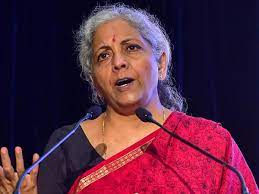With a dam in Punjab, India Cuts Off Ravi Water From Pakistan: An explanation
India completed a dam that had been waiting for 45 years to restrict the flow of water into Pakistan from the Ravi River. According to the 1960 Indus water treaty, which was signed under World Bank supervision, India is the only country with exclusive rights to the Ravi water.

A local conflict between Jammu and Kashmir and Punjab delayed the construction of the Shahpur Kandi barrage, which is situated in the Pathankot region of Punjab. However, as a result, Pakistan has been receiving a significant portion of Indian water for years.
India is fully entitled to the water of the Ravi, Sutlej, and Beas under the terms of the Indus Water Treaty, whereas Pakistan is entitled to the water of the Jhelum, Chenab, and Indus.
The governments of Punjab and Jammu and Kashmir agreed to construct the Ranjit Sagar Dam and the downstream Shahpur Kandi barrage in 1979 in order to cut off water supplies to Pakistan.
Parkash Singh Badal, the chief minister of Punjab, and Sheikh Mohammad Abdullah, the chief minister of Jammu and Kashmir at the time, signed the agreement.
Former Prime Minister Indira Gandhi started the project in 1982, and it was supposed to be finished by 1998.
Even after the Ranjit Sagar Dam was finished in 2001, the Ravi River’s water flowed into Pakistan due to the failure of the Shahpur Kandi barrage.
Although Shahpur Kandi was designated as a national project in 2008, building did not begin until 2013.
Ironically, in 2014, disagreements between Punjab and J&K caused the project to halt once further.
Ultimately, a deal between the two governments was negotiated and facilitated by the Center in 2018. Soon later, the work began, and it is now completely finished.
Kathua and Samba, two important areas of Jammu and Kashmir, will now be irrigated with the water that was originally intended for Pakistan. In the Union Territory, 32,000 hectares of land will now be irrigated with 1150 cusecs of water.
Twenty percent of the hydel electricity produced by dams would also be available to Jammu & Kashmir.
The multipurpose river valley project, which comprises two hydel power plants with a combined installed capacity of 206 MW, includes the 55.5-meter-tall Shahpurkandi Dam. Situated 11 km downstream of the Ranjit Sagar Dam Project, it is constructed on the Ravi River.







